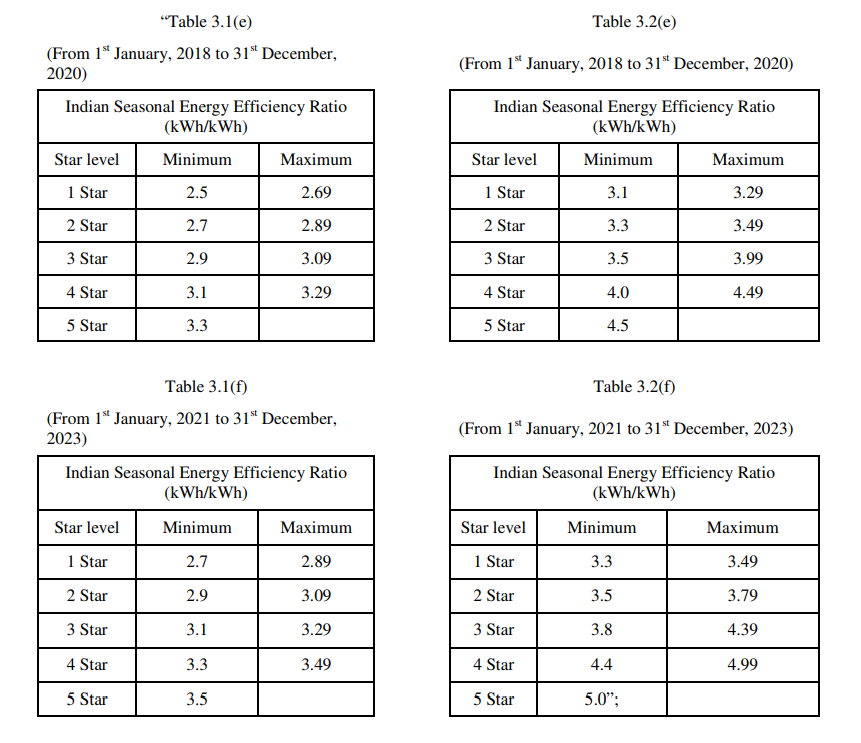Power Savings Guide
You might be familiar with this label, especially on high-power-consuming appliances.

This label not only looks quite cumbersome to understand, but in reality, it indeed is very technical & difficult to comprehend. But we will try to break it down in the simplest possible way.
Explaining Technical Terminologies
- BEE (Bureau of Energy Efficiency) – This is a Government body that looks into energy saving and tries to rate appliances according to their power consumption to help customers know what they are buying. The BEE ratings are updated every 2 years.
- ISEER (Indian Seasonal Energy Efficiency Ratio) – It is calculated on an annual basis and it is measured in B.T.U. (British Thermal Units). So, it is calculated by (Amount of heat removed by an appliance)/(Amount of energy consumed doing that). Its value varies between 3.3 5.0, the greater the value, the higher the efficiency of your appliance is.

The following is the chart for the induction efficiency motor used in ACs. Table 3.1(f) shows the revised ratio for window AC and Table 3.2(f) shows the revised ratio for split AC. This notification was made public by the Ministry of Power in October 2019.
Have you ever wondered how the Energy Star rating differs in two identical ACs from the same brands? The answer lies in the implemented mechanical engineering used in similar ACs with different star ratings, which accounts for minor tweaks done in compressor efficacy, length of assembled copper wire, varied airflow & much more.
If you are someone who uses AC for over 7 months a year burning down over 14 hours a day. You should simply go for a 5-star AC. But there are other differentials involved which are explained in the next section.
Ultimate ‘Power Savings Guide’ for an AC
Basically, it all comes down to Return on Investment (ROI). To break it down in numbers, if you consume approximately 3,000 hours of AC time in a year, go for a 5-star rated AC.
Though it may cost you roughly 10-15% more than a 3-star AC you will eventually cover up the cost citing its low operational cost. on the flip side, if you annually burn your AC for less than 2,800 hours, then go for a 3-star rated AC.
I don’t recommend going in for 1, 2, or 4-star AC as the manufacturing companies play with the ISEER ranges & consumers often end up paying more than what the AC is actually worth.
So, before you go out hunting for another AC, do the math & keep these figures in mind.
It is worth mentioning that over a period of time, the ISEER efficiency decreases with time due to the wear & tear of the mechanical components. So, a newly bought 5-star AC, if used extensively for 5-6 years may start giving an efficiency of a 3-star rated AC or even worse.





Thank you very much for sharing, I learned a lot from your article. Very cool. Thanks. nimabi
I don’t think the title of your article matches the content lol. Just kidding, mainly because I had some doubts after reading the article. https://www.binance.info/bg/join?ref=JHQQKNKN
Thank you for your sharing. I am worried that I lack creative ideas. It is your article that makes me full of hope. Thank you. But, I have a question, can you help me? https://www.binance.info/en/join?ref=B4EPR6J0
Can you be more specific about the content of your article? After reading it, I still have some doubts. Hope you can help me.